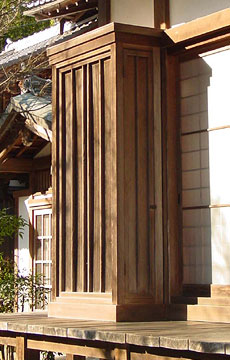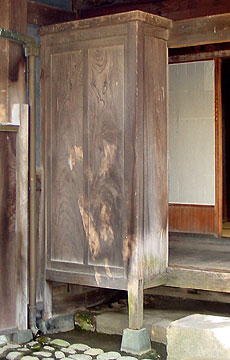| A box-like structure into which the rain shutters
*amado JΛ, are stored when
not in use. It is generally constructed at one end of a veranda or against a wall
adjacent to windows or sliding screens *shouji
αq. The dimensions of the storage unit depend on the number and size of doors
to be stored. The simplest one is called sara-ita tobukuro MΒΛά. It has
only a baseboard sara-ita MΒ, an open frame and a roof board ten-ita
VΒ. Units that receive seven or fewer shutters have side boards. This type
is called tsuma-itatate tobukuro ΘΒΛά. When the number of doors to be
stored is eight or more, the storage-box is called hashiratate tobukuro
Λά. It has a strong frame with sturdy posts that are supported by base stones.
Sometimes small floor joists are needed also. The roof boards are thick and are
either tiled or shingled. If the box is unusually deep, a drainage system may
be necessary. Usually, the rain shutters slide on a single track provided on the
exterior side of the tracks used for sliding doors. |




